This article walks you through a friendly six-step process for crafting a Behavior Intervention Plan (BIP). It starts with:
Each step highlights the importance of teamwork among caregivers and professionals. Plus, it stresses the need for data-driven tweaks to ensure the BIP truly meets the unique needs of your child, ultimately supporting their growth and development. Let’s explore this together!
Creating a Behavior Intervention Plan (BIP) is essential for tackling specific behavioral challenges in young individuals. Think of it as a strategic roadmap designed to foster positive change. This guide outlines the critical steps involved in crafting a BIP, while also highlighting the collaborative effort needed from parents, educators, and therapists to make it a success.
But here’s a question that often comes up: how can caregivers and professionals effectively identify and adapt strategies to meet the evolving needs of the child? Exploring this question can really show us the profound impact a well-structured BIP can have on a child's growth and development. Let’s dive in together and see how we can navigate this journey!
A Behavior Intervention Plan (BIP) is a helpful tool designed to tackle specific behavioral challenges and provides guidance on how to write a behavior intervention plan for a young person. Think of it as a roadmap that outlines evidence-based strategies—like positive reinforcement and functional behavior assessments—that can help reduce those tricky behaviors while encouraging positive ones, particularly in learning how to write a behavior intervention plan. This plan is tailored to meet the unique needs of the individual and illustrates how to write a behavior intervention plan that ensures every action is relevant and effective.
When everyone involved—parents, educators, and therapists—understands the purpose of the BIP, they can work together toward shared goals. This teamwork not only supports the child's growth and well-being but also empowers families, enriching their lives and helping each individual shine in their own journey of autism care. Let’s explore this together and see how we can make a difference!
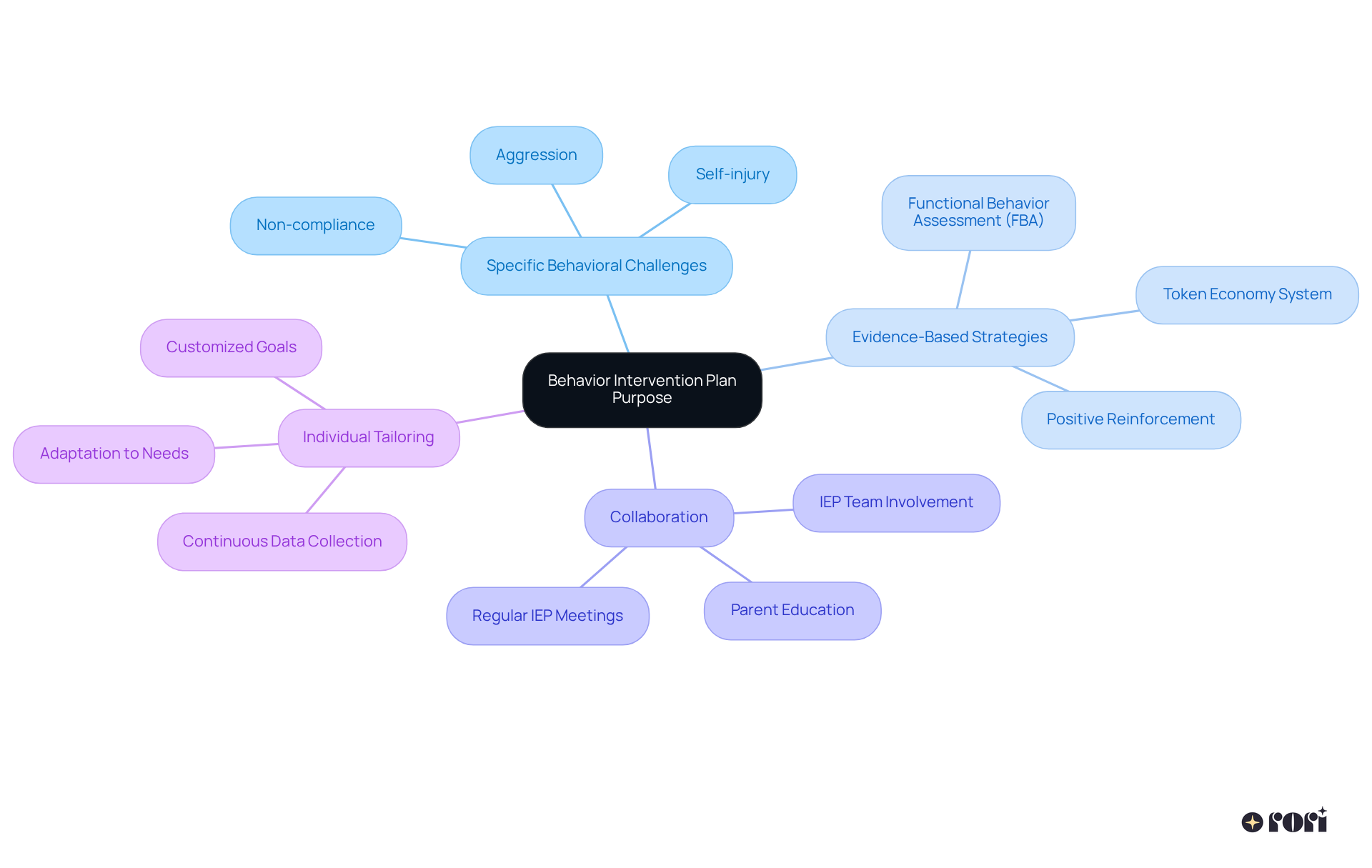
To successfully develop a Behavior Intervention Plan (BIP), it's important to understand how to write a behavior intervention plan by first recognizing the specific actions that need intervention. These actions should be clear and measurable, like 'yelling when asked to finish a task' or 'refusing to follow instructions.' Having clear definitions for each target action is key; for instance, instead of just saying 'disruptive behavior,' specify that it includes 'talking out of turn during class discussions.' This clarity helps everyone on the team understand the actions being targeted and promotes consistent responses across different settings—essential for effective implementation.
Research shows that effective BIPs are tailored to individual actions, strengths, and cultural contexts, which boosts their overall impact. Engaging parents, teachers, therapists, and caregivers early in how to write a behavior intervention plan fosters a collaborative approach. By using our care engine, caregivers can perform functional analysis for target actions and skills, helping to generate automatic progress reports for clinician review. This empowers caregivers with ABA principles and strategies, enhancing their ability to support their child’s behavioral goals through active involvement and data collection.
Don’t forget to include scheduled check-ins to assess goal achievement! Tools like A-B-C charts and frequency counts are essential for monitoring progress. Securing informed consent from parents or guardians is also essential when considering how to write a behavior intervention plan. Did you know that about 66% of children referred for ABA therapy start services and stay in therapy for at least 12 months? However, less than half (46%) continue therapy for 24 months. This highlights how crucial it is to have clearly outlined target actions to keep engagement and progress on track. Let’s explore this together!
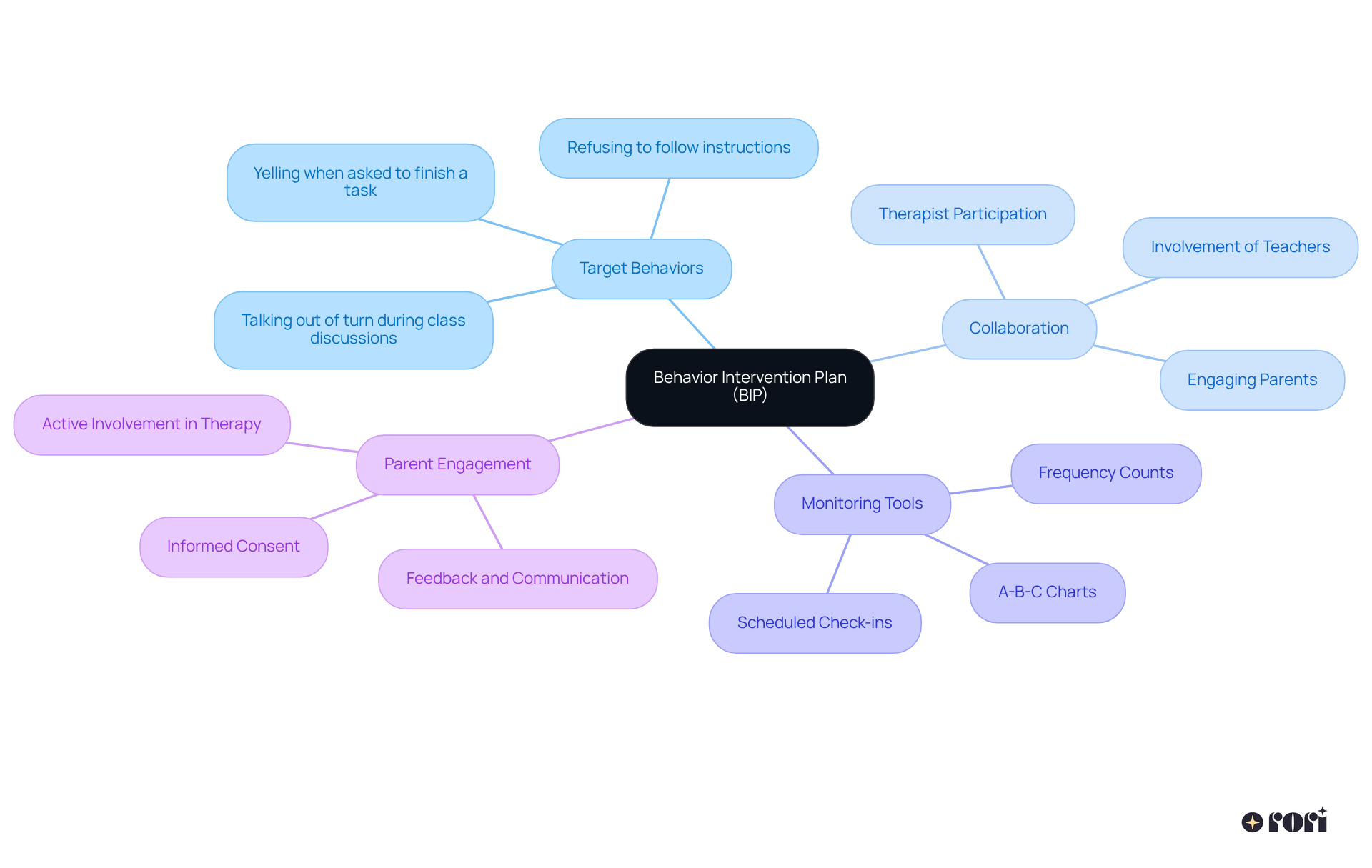
Once you've identified the target actions, the next important step is to think about what each action might be trying to achieve. This means taking a close look at the situations where the behavior occurs and considering what the young person might be hoping to accomplish. For instance, if a child often shouts during group activities, it could be a sign that they're seeking attention from peers or adults. Understanding the motivation behind these actions helps us create strategies that address the real issues rather than just the surface symptoms.
This approach not only makes behavior change more effective but also aligns with research showing that interventions tailored to the specific reasons behind actions lead to better results. Rori Care’s conduct care engine plays a key role here, conducting functional behavior analysis for targeted actions and skills while automatically generating progress reports for clinicians to review. This technology empowers caregivers by providing actionable insights and data collection strategies that support their loved ones' behavioral goals.
Did you know that about 26.7% of individuals with autism spectrum disorder experience profound autism? This highlights the importance of personalized treatment plans that take into account the unique challenges these individuals face. By hypothesizing function patterns, caregivers and clinicians can craft personalized strategies that enhance the overall growth and well-being of the young ones in their care. Let’s explore this together and see how we can make a difference!
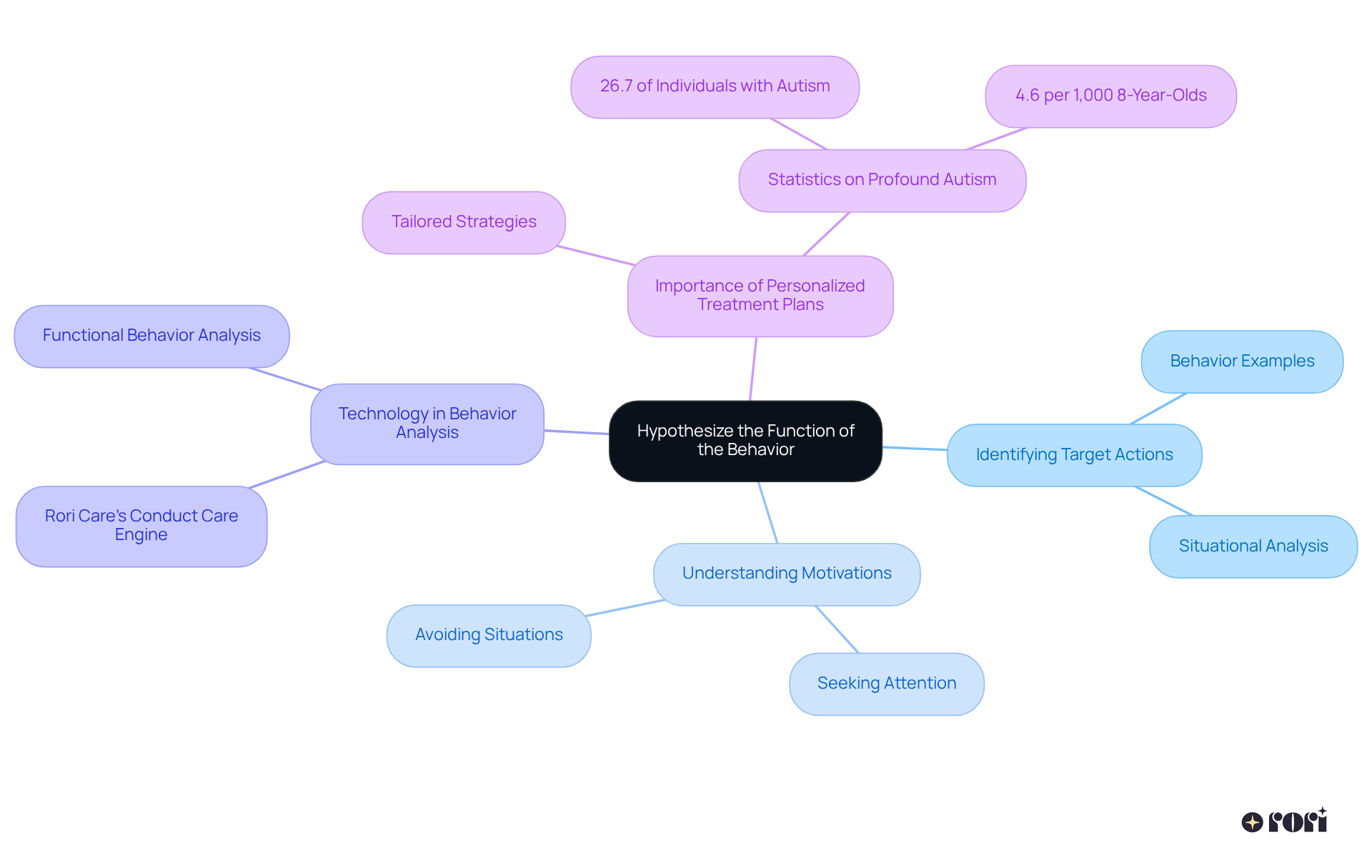
Choosing the right data collection methods is super important for evaluating how well the Behavior Intervention Plan (BIP) is working in terms of how to write a behavior intervention plan. Common methods include:
For instance, if yelling is the target behavior, keeping track of how often it happens during specific activities can really help us understand what's going on.
It's a good idea to set up a consistent data collection schedule—maybe daily or weekly—so we can monitor things reliably. This systematic approach aligns with user manual instructions and allows us to analyze the young person's progress effectively. It helps us understand how to write a behavior intervention plan to determine if the strategies we’re using are working or if they need a little tweak.
At Rori Care, we’re all about improving treatment plans based on progress report data. We’ve seen significant advancements in 90% of our young patients when the suggested hours are followed, especially with active caregiver participation. Our behavior care engine updates behavior support and skill acquisition plans after each session based on the progress made. This ensures that the strategies remain effective and tailored just for them. Let’s explore this together and see how we can support your child’s journey!
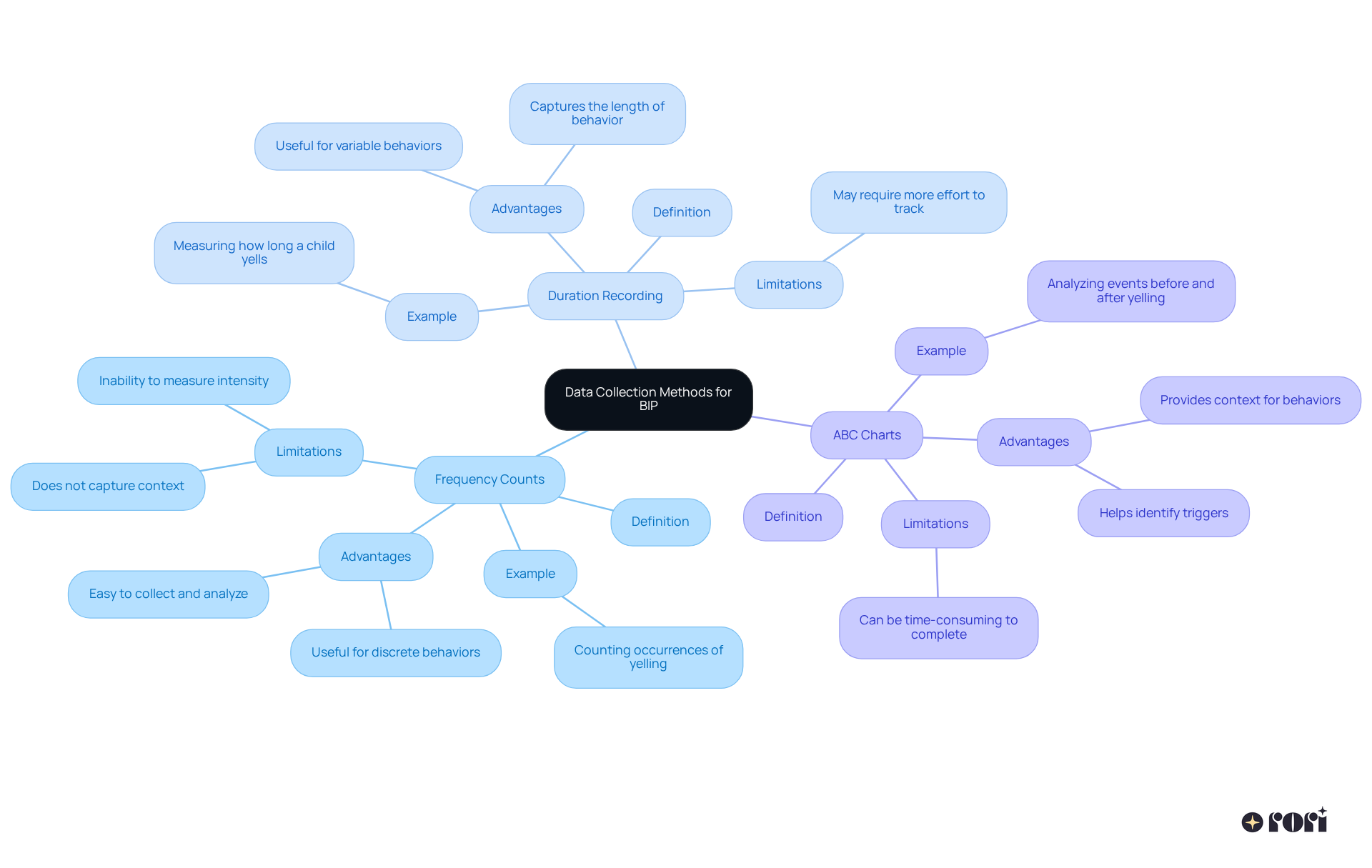
Creating effective support strategies requires understanding how to write a behavior intervention plan that is grounded in evidence and tailored to meet each individual's unique needs. For instance, if a young person shouts for attention, a great way to intervene might be to teach them to raise their hand instead.
Let’s break down the implementation steps:
It’s essential to train all team members on these strategies to ensure everyone is on the same page across different environments.
Research shows that organized and steady methods can significantly boost the effectiveness of behavior modification. In fact, ABA therapy has a success rate of over 89% in enhancing communication and social skills for individuals with autism! By promoting teamwork among caregivers and professionals, families can create a supportive framework that maximizes a young person's potential for growth and development.
Ongoing assessment and adjustment of how to write a behavior intervention plan are crucial for improving results. This ensures that strategies remain effective and aligned with the individual's evolving needs. Skilled analysts play a vital role in teaching others how to write a behavior intervention plan, crafting and executing these personalized plans based on the latest research and customizing them to fit each person's specific needs.
Let’s explore this together, and remember, we’re here to help you every step of the way!
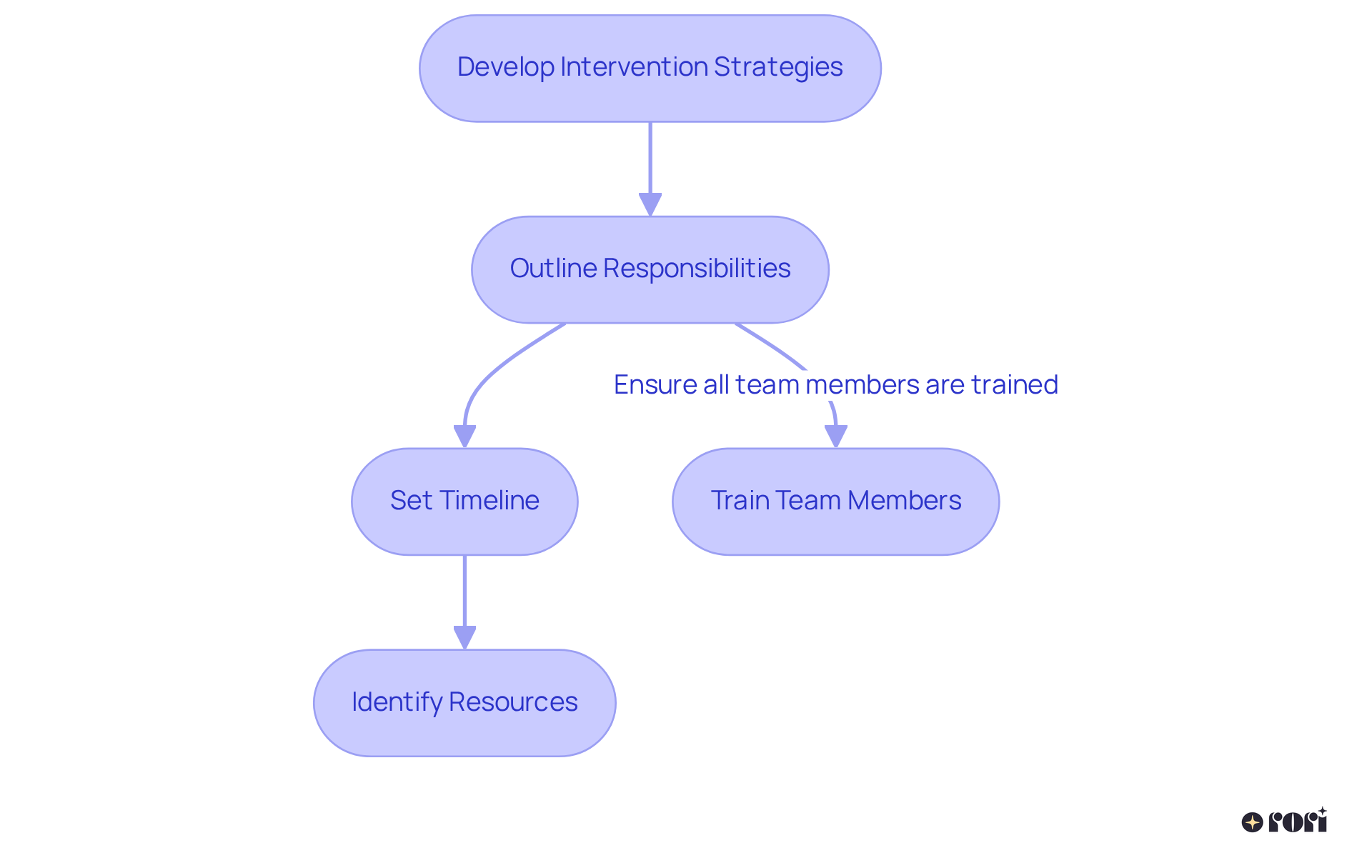
Regularly evaluating how to write a behavior intervention plan is key to making it effective! Setting specific intervals for reviewing collected data, like monthly or quarterly assessments, can really help. During these evaluations, take a moment to see if target behaviors are decreasing and if the individual is successfully adopting replacement behaviors. Research shows that 50-75% of kids undergoing intensive Applied Behavior Analysis (ABA) therapy for two or more years see significant improvements in cognitive and adaptive functioning. This highlights just how important it is to track progress!
If the data shows that interventions aren't bringing about the desired results, it's time to revisit and adjust strategies. This ongoing process not only ensures that the BIP adapts to the child's changing needs but also supports their growth and development. Child development specialists emphasize that understanding how to write a behavior intervention plan promotes consistency and positive reinforcement, both of which are essential for behavior change. By continuously evaluating and refining the BIP, parents and clinicians can create a nurturing environment that maximizes the potential for positive outcomes. Let’s explore this together and make the most of these opportunities for our kids!
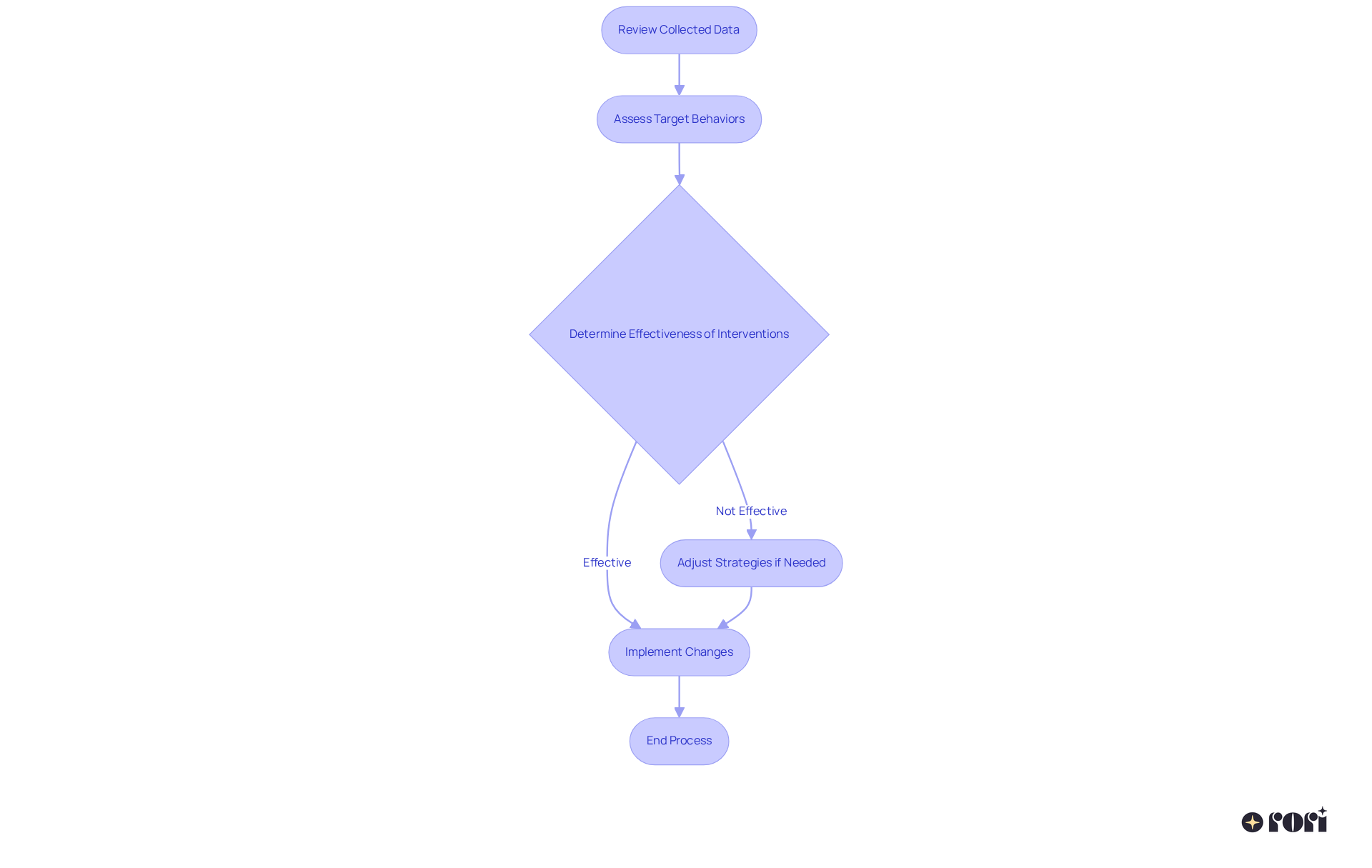
Creating a Behavior Intervention Plan (BIP) is so important for tackling specific behavioral challenges, especially in schools. This structured approach not only lays out a clear path for intervention but also brings together parents, educators, and therapists. When everyone is on the same page, it really helps support a child's growth and well-being.
Throughout this article, we’ve chatted about some key steps for developing an effective BIP. We talked about:
Each step highlights how vital clarity, consistency, and teamwork are for successfully implementing and evaluating the plan. Regular check-ins keep the strategies relevant and effective, adapting to the changing needs of the individual.
Ultimately, we can’t underestimate the importance of a well-crafted BIP. It’s a crucial tool for encouraging positive behavioral changes and boosting the overall development of individuals facing these challenges. By embracing this structured approach, caregivers and professionals can join forces to create supportive environments that empower young people to thrive. Engaging with these steps not only unlocks potential but also enriches the lives of everyone involved, paving the way for a brighter future. Let’s explore this together!
What is a Behavior Intervention Plan (BIP)?
A Behavior Intervention Plan (BIP) is a tool designed to address specific behavioral challenges by outlining evidence-based strategies to reduce problematic behaviors while promoting positive ones. It serves as a roadmap tailored to the unique needs of an individual.
Who should be involved in the development of a BIP?
The development of a BIP should involve parents, educators, therapists, and caregivers, as their collaboration is essential for supporting the child's growth and well-being.
How should target behaviors be defined in a BIP?
Target behaviors should be clear and measurable. Instead of vague terms like 'disruptive behavior,' specific actions should be defined, such as 'yelling when asked to finish a task' or 'talking out of turn during class discussions.'
Why is it important to have clear definitions for target behaviors?
Clear definitions help everyone on the team understand the specific actions being targeted, promoting consistent responses across different settings, which is essential for effective implementation.
What tools can be used to monitor progress in a BIP?
Tools such as A-B-C charts and frequency counts are essential for monitoring progress and assessing goal achievement in a Behavior Intervention Plan.
What is the significance of engaging parents and caregivers in the BIP process?
Engaging parents and caregivers fosters a collaborative approach, empowering them with ABA principles and strategies, and enhancing their ability to support their child's behavioral goals through active involvement and data collection.
What should be included in a BIP to ensure ongoing assessment?
Scheduled check-ins should be included to assess goal achievement and ensure that the plan remains effective and relevant to the child's needs.
What percentage of children referred for ABA therapy continue for at least 12 months?
About 66% of children referred for ABA therapy start services and stay in therapy for at least 12 months.